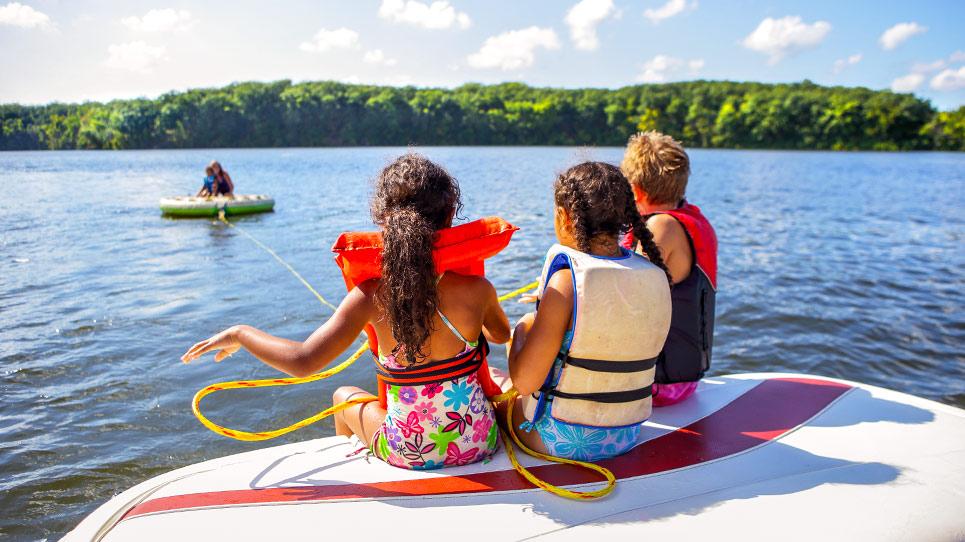BOATING
We know water is everywhere. So to make it easy, we divided it into three categories: Water in the home, swimming safety and boating safety.
Here you’ll find everything you need to know about boating safety. With almost 100 different kinds of boats – from kayaks to canoes to motorboats – there’s a good chance most of us will be having a great time on the water at some point. So when you do, please remember these simple safety tips for the entire family.
The Hard Facts
In 2013, 77 percent of all fatal boating accident victims drowned, and of those who drowned, 84 percent were not wearing a life jacket.
Top Tips
- Always have your children wear a life jacket approved by the U.S. Coast Guard while on boats, around open bodies of water or when participating in water sports. Make sure the life jacket fits snugly. Have the child make a “touchdown” signal by raising both arms straight up; if the life jacket hits the child’s chin or ears, it may be too big or the straps may be too loose.
- A large portion of boating accidents each year involve alcohol consumption by both boat operators and passengers. To keep you and your loved ones safe, it is strongly recommended not to drink alcoholic beverages while boating.
- Infants and young kids are at a higher risk for hypothermia, so if you are taking a baby on a boat, just take a few extra precautions to keep your baby warm. If your children seem cold or are shivering, wrap them tightly in a dry blanket or towel.
- We know you have a million things to do, but learning CPR should be on the top of the list. It will give you tremendous peace of mind – and the more peace of mind you have as a parent, the better. Local hospitals, fire departments and recreation departments offer CPR training.
- Teach children that swimming in open water is not the same as swimming in a pool: They need to be aware of uneven surfaces, river currents, ocean undertow and changing weather.
